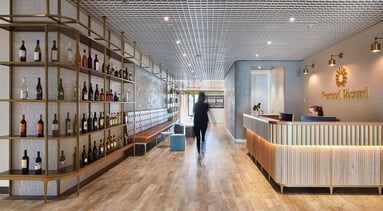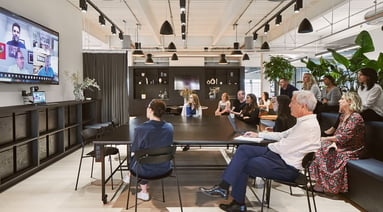
In a recent Smart Company article we share some of our experts' ideas on designing for neurodiversity. These physical design, cultural and operational changes can be applied to better cater to neurodiverse employees; and in doing so improve the workplace experience for all.
We spend hours on end at work, yet some workplaces don’t effectively support employees’ mental health or those with neurological differences such as autism, ADHD and dyslexia.
What designing for neurodiversity really means.
Designing for neurodiversity means getting the basics right so a workplace is not only functional across all factors of user experience normally expected of a workplace, but it specifically includes considerations of the neurodiverse segment of the workforce, which roughly makes up anywhere from 15-25% of the entire global population, with variations across countries.
An increasing number of organizations position themselves not only considering but enabling neurodiversity, but with very little detail on how this is achieved and what that means for businesses in a physical, operational and workplace culture lens.
5 key principles that can make a positive impact in your workplace:
Wellness spaces: it’s not just candles and soft cushions. A wellness room should be a space away from work settings where employees can recharge and manage stressful moments, with enhanced acoustic and privacy measures. These spaces allow for calm reflection and reduce cognitive overload.
Sensory adjustments: clearly separate zones that support high activity (noisy, group work) and low activity (quiet, individual work) for both individual and collaborative working. Having both bookable and non-bookable spaces supports individuals who are sensitive to noise and light to choose where to work at different times of day.
Clear way-finding: simple, minimal and clear signage is important for those who process visual aids better than text, as is appropriate communication for visually impaired employees.
People leader expectations: educate and upskill people leaders to have a basic understanding of neurodiversities so they can better support their teams. Implement staff training from healthcare professionals and education toolkits to get the basics right.
Physical exercise: it’s no secret that exercise has a positive impact on mental health and supports cognitive function. By providing access to exercise opportunities, whether in the office, in the building or through a subsidized fitness center membership, there are many ways that organizations can encourage employees to be more active.
Read the full article on Smart Company here.


